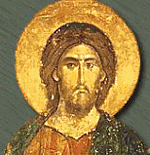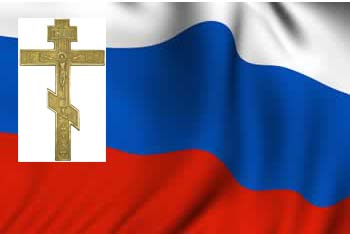|
Russian America (Russian: Русская Америка) was the name used for Russian possessions in the New World the period between 1733 and 1867 in which Russia claimed the territory that today is the U.S. State of Alaska. Formal incorporation of the possessions did not take place until the Ukase of 1799, which established a monopoly for the Russian-American Company and also granted the Russian Orthodox Church certain rights in the new possessions.
The first Russian colony in Alaska was established in 1784 by merchant Grigory Shelikhov. Shelikhov's attempt to colonize Kodiak Island was met with resistance by the native population. He returned to Russia and installed Alexandr Baranov as director of the colony. In order to convince the Russian imperial court of the seriousness of his colonial ambitions, Shelikhov recruited volunteers from the Valaam, an environment that appears strikingly similar to the Kodiak archipelago's landscape, and Konevitsa monasteries to travel to the new colony.
The volunteers, led by Archimandrite Joasaph (Bolotov), departed Saint Petersburg on December 21, 1793, and arrived at Kodiak Island on September 24, 1794. When they arrived they were shocked by the harsh treatment of the Kodiak natives at the hands of the Russian settlers and Baranov. They sent reports to Shelikhov detailing the abuse of the local population, but were ignored. In response, however, the Holy Synod created an auxiliary episcopal see in Alaska in 1796, and elected Fr. Joasaph as bishop. Fr. Joasaph and a small party returned to Russia in 1798 for his consecration, and to offer first-hand accounts of what they had seen. During their return voyage to the colony in May 1799, their ship sank and all aboard died.
In 1800, Baranov placed the remaining monks under house arrest, and forbade them to have any further contact with the local population.
Despite the lack of leadership, the Orthodox mission in Alaska continued to grow. In 1811, however, the Holy Synod officially closed the episcopal see. It was not until 1823 that the Holy Synod sent instructions for a new priest to travel to Alaska.
Father John Veniaminov of Irkutsk volunteered for the journey, and left Russia in May 1823. He and his family arrived at Unalaska Island on July 29, 1824. In 1840, Fr. John accepted monastic tonsure and ordination as the Bishop of Kamchatka, the Kurile and Aleutian Islands, making him the first ruling bishop of the Alaskan mission since Bishop Joasaph.
Bishop Innocent was elevated to archbishop in 1850. For his missionary and scholarly work that had focused on blending indigenous Alaskan languages and cultures with Orthodox tradition, Innocent became a saint of the Orthodox Church in America in 1977, and is referred to as the Enlightener of the Aleuts and Apostle to the Americas.
By the 1860s, the Russian government was considering ridding itself of its Russian America colony. Zealous overhunting had severely reduced the fur-bearing animal population, and competition from the British and Americans exacerbated the situation. This, combined with the difficulties of supplying and protecting such a distant colony, brought about a waning interest.
After Russian America was sold to the U.S., all the holdings of the Russian–American Company were liquidated.
|
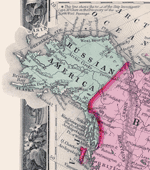
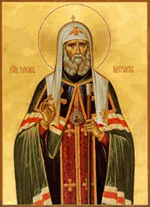
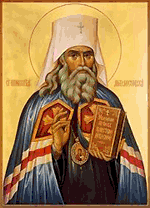
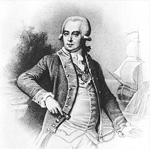
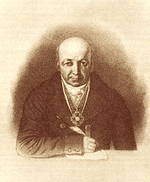


|
|
Following the transfer, many elders of the local Tlingit tribe maintained that "Castle Hill" comprised the only land that Russia was entitled to sell. Native land claims were not addressed until the latter half of the 20th Century, with the signing of the Alaska Native Claims Settlement Act. At the height of Russian America, the Russian population had reached 700. They and the Creoles, who had been guaranteed the privileges of citizens in the United States, were given the opportunity of becoming citizens within a 3–year period, but few decided to exercise that option. General Jefferson C. Davis ordered the Russians out of their homes in Sitka, maintaining that they were needed for the Americans, and the Russians complained of rowdiness of the troops and assaults. Many Russians returned to Russia, while others travelled to California and the Pacific Northwest to seek their fortunes.
The transfer of Russian America in 1867 to the United States of America by Tsarist Russia, a transaction historically purported as an intrinsically legal sale, was claimed to be only a lease by Professor Igor Panarin, in an interview with Izvestia published on Monday, November 24, 2008. However, there is no mention of a time period nor a lease in the original treaty document in which Russia ceded the territory to the United States.
To Top
|
